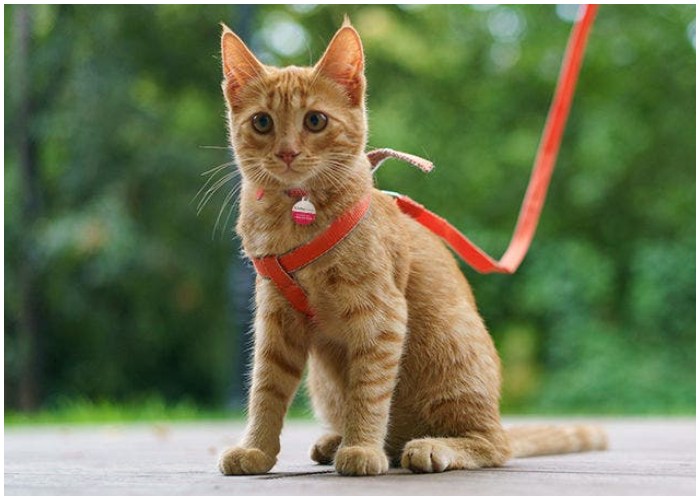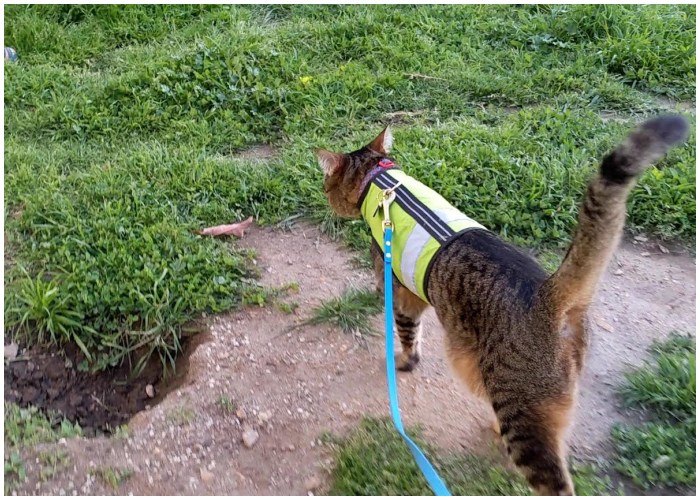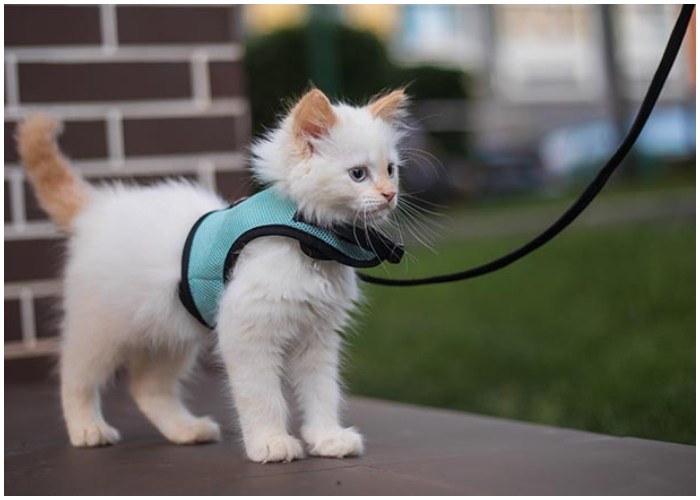Cat leash training might seem like a myth, but the reality is far from it. Those photos and videos of cats exploring the outdoors with their owners aren’t staged. These cats are not professional actors; they’re everyday pets whose owners have invested the time and patience needed to train them. Leash training a cat is entirely possible, and while it requires patience, the rewards are significant. From enhancing physical health to improving mental well-being, taking your cat on outdoor adventures can be a fulfilling experience for both of you. Not only does it provide a safe way for your cat to explore the world, but it also strengthens the bond between you and your feline friend. By following a series of carefully planned steps, you can successfully train your cat to enjoy the great outdoors safely and confidently. Here’s a comprehensive guide on how to achieve this rewarding goal.

Why Leash Training Your Cat Is a Good Idea
Leash training offers numerous benefits, making it a worthwhile endeavor for cat owners. Firstly, it provides much-needed exercise for your cat, which is particularly important as they age. While kittens are naturally active, older cats tend to slow down. Regular walks can help maintain their physical health by encouraging muscle activity and reducing the risk of obesity. Moreover, leash training stimulates a cat’s mental health. Cats are inherently curious creatures, and the opportunity to explore new environments keeps their minds sharp. Being outside exposes them to various stimuli, from different scents to sights and sounds, which can alleviate boredom and promote mental well-being. Additionally, leash training can strengthen the bond between you and your cat, offering a shared activity that both can enjoy.
Which Cats Can Be Leash Trained?
While leash training is possible for most cats, some may take to it more easily than others. Generally, starting the training process when your cat is a kitten can lead to quicker acceptance. However, older cats can also be trained successfully with consistent effort and patience. Cats that are naturally confident and not easily frightened by new experiences tend to adapt better to leash training. A food-motivated cat can also be easier to train, as treats can be used as positive reinforcement. It’s important to recognize that every cat is unique, and some may take longer to adjust to wearing a harness and walking on a leash. Patience and consistency are key to successful training.

Harness and Leash Training: Step by Step
Step One: Familiarization
The first step in leash training is to familiarize your cat with the harness. Place the harness near your cat’s toys or feeding area so they can investigate it at their own pace. Allow your cat to sniff and explore the harness until they are comfortable with its presence. This process helps reduce any initial fear or anxiety associated with the harness.
Step Two: Putting on the Harness
Once your cat is comfortable with the harness, it’s time to put it on. Expect some resistance at first; your cat may flop down or try to remove it. Use treats and positive reinforcement to create a positive association with the harness. Initially, keep the harness on for a few minutes, gradually increasing the duration over several days or weeks. Always reward your cat with treats and affection to reinforce good behavior.
Step Three: Attaching the Leash
After your cat is accustomed to the harness, attach the leash but let your cat drag it around. This allows them to get used to the sensation of the leash without feeling restricted. Continue using treats to reward your cat for calm behavior. Repeat this process until your cat is comfortable with the leash.

Step Four: Holding the Leash
Begin holding the leash and gently guiding your cat. Follow your cat around, allowing them to explore while you maintain control of the leash. Use treats to encourage your cat to move in the direction you want. This step may take time, as cats are naturally independent and may prefer to lead. The goal is to make the experience enjoyable and stress-free for your cat.
Step Five: First Trip Outside
When your cat is comfortable with the harness and leash indoors, it’s time for the first outdoor adventure. Choose a quiet, safe area for the initial outing. If you have a yard, start there. For apartment dwellers, find a calm, dog-free space. Always carry your cat outside to prevent them from associating the door with freedom. Monitor your cat for signs of fear, such as a fluffed tail or refusal to move. Keep the first trip short and gradually increase the duration as your cat becomes more confident.